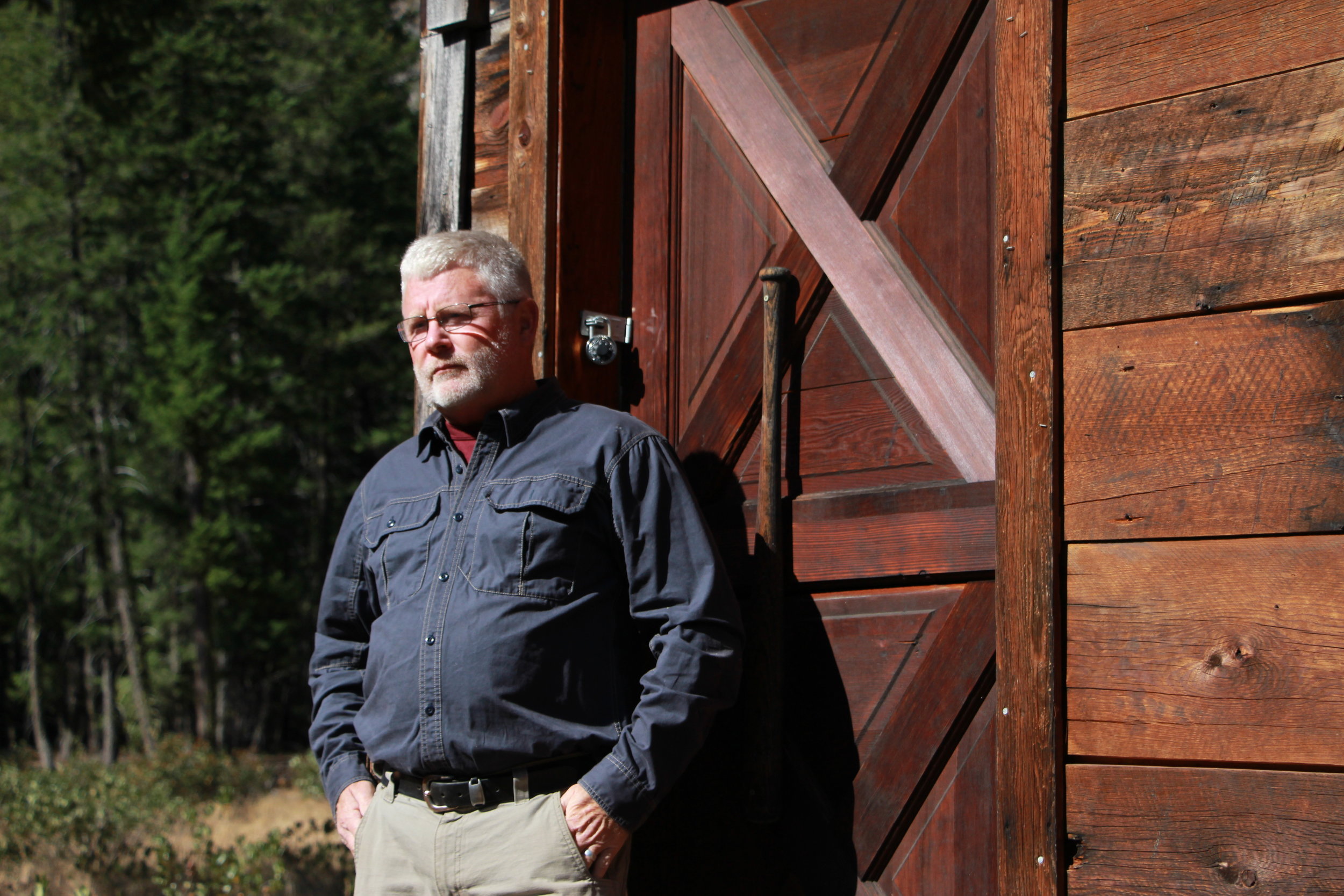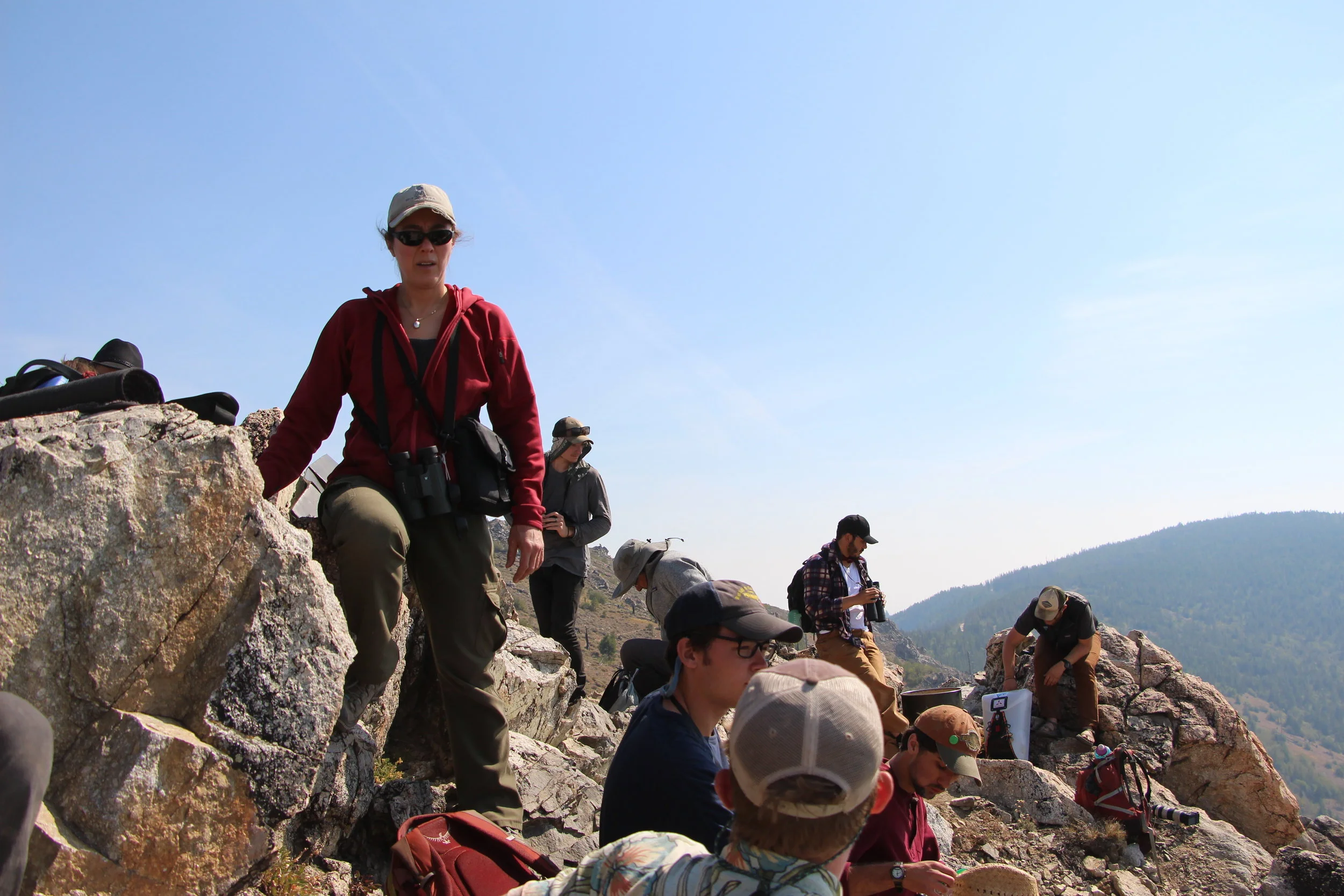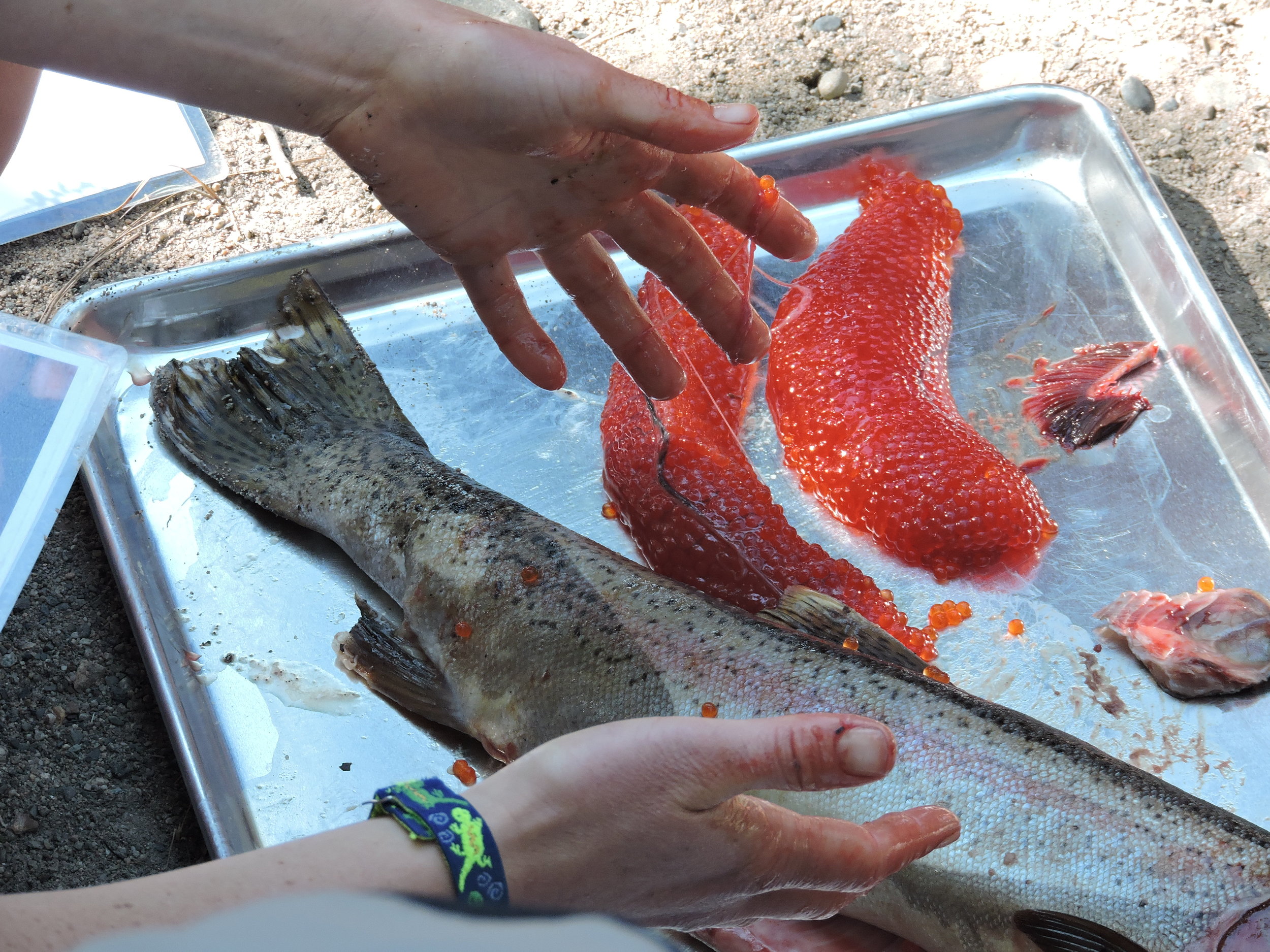Kent Woodruff
Retired USFS Wildlife Biologist; Director, Methow Beaver Project
Twisp, WA
9/1/2018-9/6/2018
Kent Woodruff is no ordinary naturalist. Wildland firefighter, bat aficionado, hawk watcher, forest service biologist, and beaver believer, Kent flows over with passion for his home, the Methow Valley. He has an amazing way with words and people. He is a champion of wildlife recovery, reintroduction, and the founder of crucial environmental groups and projects. We learned that the Methow is an ecological haven for hawks, beavers, elk, wolves, bats, rattlesnakes and more. Over the weeklong crash course in ecology we learned the many interactions between species, the land, and the role that humans have taken in restoring much of these interactions. Kent brought our focus to a few critically important and/or imperiled species of the Methow including the Peregine Falcon, Western Rattlesnake, Townsend Big-eared Bat, and the Lookout and Loop Loop wolf packs. It didn’t take long for Kent to transfer his passion for the Methow to us. Kent taught us about the wonders of the beaver, what he calls the “Machinery of the Methow” for their stream damming, habitat creating, and overall transforming characteristics.
Kent is the founder of the Methow Beaver Project, designed to reintroduce beavers into degraded habitats, where streams run fast and lose their water quickly, to create healthy riparian areas, store water, and attract wildlife. Kent is a beaver believer and we quickly converted too as we waded through a series of beaver ponds, searching for indicators of transformation, succession, riparian habitat, and changes to the forest. Beavers had been introduced to this site two years prior and had quickly gotten to work. We found frogs, birds, snakes, moose, aspen, and more, nurtured by these benevolent beavers. It wasn’t hard to see that Kent holds the beaver close to his heart. The species unite the ecological diversity of the Methow in their restoration capacities and recovery as a species. Kent’s positive energy and passion for the projects he spearheads has inspired us to “dig deeper”, never settle, and to be curious of the world around us.
By Whitney Rich
Photo by Amara Killen






